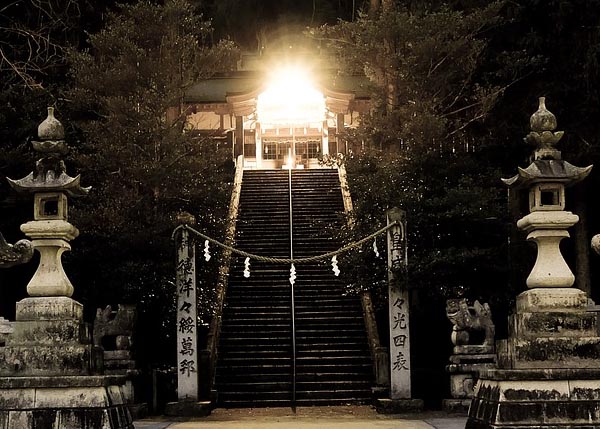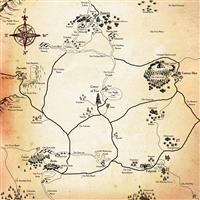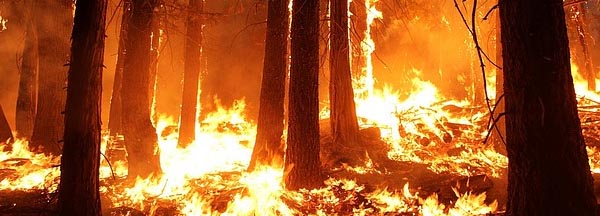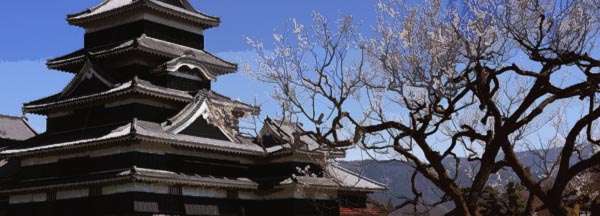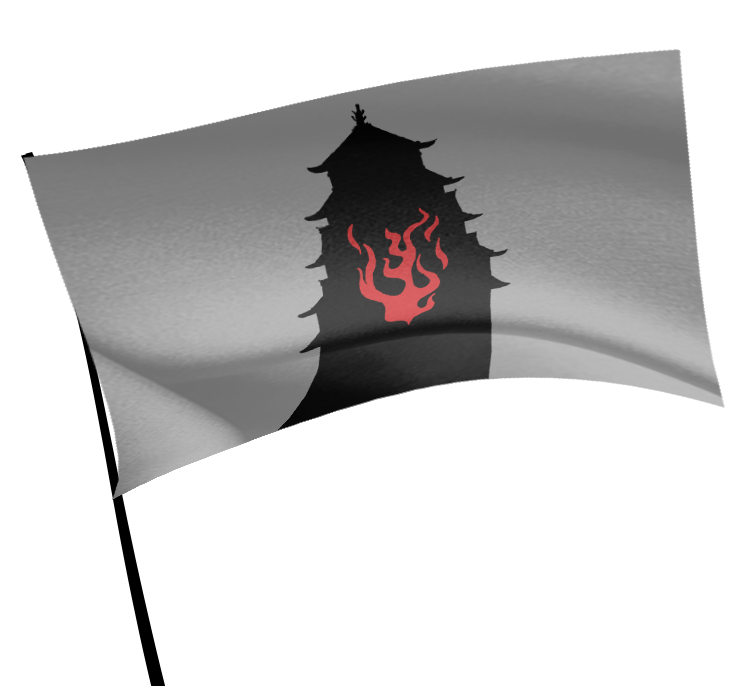
Aqualon Timeline
The First Age
... 5000 ARe
The First Age begins with the Reshaping of the World out of the Nine Realms. Shielded by the faceless World-Shaper, the Men of Midgard and the Swarten found themselves on the grassy plains of the Middle Lands, which they began to settle during this age. The Albenmannen and their cousins made their way down from Asgard, where the Old Gods had protected them from the Reshaping of the World. In time they became the Angel Saxons and their cousins became the tribes of the North, sometimes called the Nordmen. Much settling was done during this age, and the first cities began to form on the face of Aqualon. The Iron Belt was a sheer impenetrable divide that was incapable of supporting agriculture or life stock, so no settlements were erected there, and no ships could be brought to the far side of the Rusty Shore, meaning the islands of the Ocean Belt remained uninhabited and unexplored for most parts of this age.
-
0 FA
The Reshaping of the World
Geological / environmental event
Age of the Iron Divide
5000 ARe 5700 ARe
At the end of the First Age, the Seventeen Yonder Islands had been settled and the Iron Belt put a firm geographical divide between them and the Great Land. The pursuers of magic and science were still on good terms, both referring to themselves and each other as scholars, and the Manifesto of Technocracy had not been written yet. The Men of Midgard had settled what would become the Middle Lands, the Saltplains, and the Yamato Kingdom, and some of them set out to settle the Wilderplains, founding the city of Estwerde. The Nordmen were regularly rallied by the Old Gods to raid the Great Land. It was towards the end of this age and the beginning of the next that the mages began to accrue considerable power, leading to ever greater wars, further instigated by the Old Gods that were always hungry for conflict.
-
143 AID
The Yamato Surveys: Jamphel Yeshe
Discovery, ExplorationLocation
Jamphel Yeshe -
189 AID
The Founding of Jamphel Yeshe
FoundingLocation
Jamphel Yeshe -
198 AID
213 AID
The Monastery of the Grand Sages is Built on Jamphel Yeshe
Construction beginning/endLocation
Jamphel Yeshe -
4th century AID
Trade for Magics
Metaphysical / Paranormal event -
320 AID
The Eternal Flame of Lumina Aka is Lit
Religious event -
350 AID
The Maritime Stratocracy of Guantil-ya is Founded
FoundingA total of five of the Seventeen Yonder Islands with strong naval traditions and fleets form a united government, lead by the powerful admiralcy of Guantil-ya. The unification is a reaction to ever more rampant piracy around the Ocean Belt, and a bloody war against the pirate houses of the Corsic Ocean ensue.
-
432 AID
2 Wexling446 AID
15 Auri
The first University
Construction beginning/endThe Van Maxwell School of Logic and Sciences gained renown among the Seventeen Yonder Islands and purchased a number of additional buildings to use as housing, lecture halls, and a library.
-
510 AID
519 AID
Doubts about the Great Clockwork arise in Jamphel Yeshe
Location
Jamphel Yeshe -
541 AID
The Sect of the Grand Sages Ends
The last living acolyte of the Five Sages takes his life, plunging to his death at the cliffs to the west of the island. As the Clockwork had left their lives, a strange melancholy had infected them, bringing with it a sense of missing purpose, as if the universe was endless and free of meaning to them. Unable to unite this new reality, they found themselves trapped with the teachings they had aspired to; they killed themselves one by one, until finally none were left.
Location
Jamphel Yeshe -
567 AID
The Original Baba Yagas
Life, CareerOne of the three sisters that together became the first Baba Yaga of all pirates, Mastreyja the Sea Witch, is chased by the Keeper of Water Rubina Dunhaine to the shores of Jamphel Yeshe. To the surprise of both, not only the magic of Mastreyja fails her but all water also ceases to heed Rubina's command. Dumbstruck, Rubina freezes, not comprehending the situation, but Mastreyja, a ruthless master of pirates and lowlifes, seizes the opportunity to stab Rubina, killing the Keeper of Water. It is said, though only Mastreyja's account speaks of this, that in that moment the sky tore open and great gears and revolving pillars revealed themselves to the witch, and the great hand of the Clockwork itself reached out to Jamphel Yeshe to drag the soul of Rubina back into the light, for none could be reborn that died on Jamphel Yeshe, but the cycle of Keepers must never be broken.
-
581 AID
The Baba Yagas are on the Rise
Political eventMastreyja has decided that no place in the world could be safer for her than Jamphel Yeshe, for even the Clockwork never interfered here save for that one grand spectacle she had supposedly witnessed. Using the resources of her sisters Vanahel and Ludravia as well as her extensive contacts and skills in alchemy and herb lore, she built from scratch a mighty drug empire, planting vast fields of poppy and coca, bringing an era of wealth to the great pirate houses of the Corsic Ocean that made it possible to, at least for a time, withstand the growing military pressure of the islands that banded together to form the Maritime Stratocracy of Guantil Ya.
Location
Jamphel Yeshe
Age of Awakening
5700 ARe 5900 ARe
During this age, the mages began to realize the scope of their power, and they helped the populus of the Middle Lands to construct fortified positions that would slowly grow into the five cities of Aquaris, Lumina Aka, Fulgrath, Arda, and Aerialis. They did so to resist the regular raids of the Nordmen and to create a bulwark between the North and the Saltplains, which had always been extremely fertile and were largely responsible for the wealth in the center of the Great Land. The Yamato Kingdom also attempted to create a more militarized force of mages, even though their location atop the Yamato Mountain Range was significantly safer from the Nordmen than the Middle Lands; still, they feared the rising power of the Middle Lands as well. During these attempts they employed the mad magus Hestia (at the time still a respected master of fire magic) to train and lead their forces. She held this position until the anexxing of Estverde, which was planned by the Yamato Kingdom but went horribly wrong, and the lands of Aqualon held their breath in terror for a year or two after the city had gone up in flames. In that time, the technocrats arrived from the Seventeen Yonder Islands, having completed their manifesto, trying to spread the benefits of science, and having scholars in positions of power rather than nobles or city councils. They found a land still in shock and turned to accuse the mages of reckless abuse of power, and for a time, political power shifted away from the mages of the Middle Lands and towards the technocrats, who founded the great city of Altonar in the west. While the people of the Great Land had believed that the Nordmen had stayed off their relentless raids for the same reason the mages had stopped hostilities, this proved to be wrong, for the Old Gods had made plans to take over the Great Land, arming the Nordmen with powerful magic weapons, forged by their most beloved servants, the Angel Saxons. This invasion, accompanied by the rise of the Brotherhood of the Null, which had quietly arrisen out of the figurative ashes of Estverde, ultimately lead to what is now called the Age of Heroes.
-
2nd century AA
The Great Pirate Houses have Faded, but the Depravity of Jamphel Yeshe Continues
Political eventThe Baba Yagas have long perished and their title has become one that is passed along every two years to the winner of the biennial great pirate race of the Corsic Ocean. But the pirate houses are scattered and weakened due to the ruthless campaigns of the Maritime Stratocracy of Guantil-ya, and the title means little at this time. Still, the drug trade flourishes and new drug lords have arisen on Jamphel Yeshe, the island growing ever more prosperous, though the wealth remains in few, precious hands while most of the people living there are addict scum and drug-slaves. This continues undisturbed for many, many centuries, and even occasional attacks by powerful sovereign nations fail as the island has been heavily fortified and is completely immune to magic.
Location
Jamphel Yeshe -
21 AA
Hestia Bygate is Born
Life, BirthThough her birth is uneventful, high expectations are already placed on Hestia when she comes into the world since her parents are both high-ranking members of the Mages of the Bonfire Shrine.
-
31 AA
Hestia Joins the Mages of the Bonfire Shrine
Life, EducationAt the age of 10, Hestia Bygate is anointed a shrine maiden of the Bonfire Shrine, expected to follow in the footsteps of her parents. This marks the beginning of her magic education.
-
36 AA
Hestia Becomes the Youngest Member of the Fire Watchers
Life, CareerAt the age of 15, Hestia Bygate is the youngest person to ever be titled a Magus of the Fire Watchers, a sub-order of the Mages of the Bonfire Shrine. As such, she begins to travel the Middle Lands, working to handle fires before they can cause serious damage.
-
52 AA
Manwhe
Expedition to Mt. Tarkaal
ExpeditionTogether with Frederick Byren, two surveyors, and a historian, Hestia mounts an expedition to climb Mount Tarkaal and survey the Middle Lands in order to create the most accurate map of the land of that time. -
52 AA
Blugree
Hestia is Banished from the Bonfire Shrine
Life, Failure / MishapAfter causing a major fire in the Charwoods that gets out of control, the elders of the Mages of the Bonfire Shrine can no longer ignore her destructive tendencies that go against doctrine. She has her title revoked and is forbidden from ever coming near the Bonfire Shrine again.
-
53 AA
56 AA
Hestia Becomes a Tutor to the Hildebrandt Household
Life, Organisation AssociationTraveling to Lake Rahn following her banishment, Hestia joins the household of Lord Hildebrandt, master of the Lake Rahn domain. Here she spends most of her time tutoring the children of the household, sometimes counseling the Lord on decisions.
-
58 AA
Hestia Joins the Yamato Court
Life, Organisation AssociationAfter delivering her famous map of the Middle Lands to the Emperor of the Yamato Kingdom, Hestia is afforded citizenship in the Yamato Kingdom and appointed Consultant of the Imperial Cartographer. Later that year she also receives the newly created title Special Advisor on the Art of Magic and begins teaching the fire magic she has learned at the Bonfire Shrine to Yamato mages.
-
63 AA
The Ryûga Order is Founded
FoundingIn the Yamato Kingdom, the art of war magic is being perfected largely thanks to Hestia Bygate, who has been employed by the Emperor as a special advisor for military magical education. On her behest a special platoon of mage warriors is founded by imperial decree, and she is declared general of this new force trained by her.
-
65 AA
Hestia's Influence Grows
Life, MilestoneThough already a special general, Hestia was initially still kept out of war councils. After several successful campaigns with her new Ryûga Order, the Emperor grants her the new title Special Advisor to the Imperial Military Council, allowing her to join all military council meetings and participate as a full member.
-
72 AA
Hestia is Appointed Daikan of the Easternmost Provinces of the Yamato Kingdom
Life, CareerIn recognition of her years of service and contributions to the state, Hestia Bygate is appointed Daikan (governor) of the Easternmost Provinces of the Yamato Kingdom. These border on the lands of Estverde.
-
98 AA
The Monastery of the Five Paths is Founded
FoundingThe Monastery of Five Paths if founded in the halls of the former temple of Yilik in an attempt to spread wisdom and enlightenment through magic. As the mages of the Middle Lands are still disorganized at this point in time, this quickly establishes the Monastery as the old center of the magical new world, the magical old word of course being centered around the Angel Saxons.
-
100 AA
107 AA
Tensions Between the Yamato Kingdom and Estverde Rise
Political eventEstverde is growing uncomfortable with Yamamoto expansion policies and tries to fortify its borders, claiming that the Yamato Kingdom is encroaching on their territory. The negotiations and threats are met especially harshly by Hestia Bygate, Daikan of the Easternmost Provinces.
-
108 AA
2 Yanos108 AA
4 Yanos
Estverde is Burned to Ashes
Disaster / DestructionOn the second day of the six month 108 AA, Hestia Bygate, the Ryûga Order, and several army divisions of the Yamato Kingdom arrive at the walls of Estverde, trying to annex the great city. The first and second infantry divisions are mowed down by archers and tar pits dug around the city. After the siege has been set up on the third day of the six month, a representative of the city arrives in the encampment to find out the terms of the Yamato Kindom on the fourth day of the six month. He mocks Hestia to the peril of his people, and the general, still shaken by the loss of two divisions and enraged by the representatives, uses all the magical power she can bring to bear to engulf the city in a great pillar of flame, carbonizing every man, woman, child, stick, and stone. This day will forever change the world's stance on war magic and may have, ironically, prevented the end of civilization during the Age of Heroes.
-
108 AA
12 Inari
Hestia Escapes
Life, CrimeAfter her Spellblight-stricken body is carried back to the Yamato Kingdom, Hestia Bygate is accused of defying imperial orders by destroying Estverde instead of annexing it, and in light of the massive loss of life, she is sentenced to death despite her extensive contributions to the kingdom. However, when she is supposed to be carried back to Estverde to be executed there, she burns the tower she has been imprisoned in down and flees.
-
109 AA
The Death of the Mad Magus Hestia
Life, DeathHestia Bygate is executed by the Lord of Fire Horvath Innsrai in the ruins of Estverde, but the aftermath of her most infamous deed will have consequences reaching far beyond her death.
-
146 AA
20 Auri 17:00
The Darmstadt Processor MK1 is Constructed
Scientific achievementIn this historic year, Prof. Dr. Inv. Mark Darmstadt builds his very first Darmstadt Processor; the first complex computation machine, which uses biological components to function. With the advent of the first computer, the development of the technocrats seems to leave the curve behind them permanently.
-
155 AA
2 Yanwhe156 AA
24 Manwhe
The Null Concord
Political eventNear the end of the Age of Awakening, just after announcing themselves to the world, the Brotherhood of the Null forced the nations of the Great Land to the negotiation table, hammering out that any wars involving large scale magic must be waged on the Untamed Meadows on the ruins of Estverde, creating a 'balance of repercussions' that woud force all other signing nations to act immediately against offenders who broke the concord. The Null Concord additionally severely limits or forbids the development and deployment of high tier desctructive magic and technologocal weapons of mass destruction, counteracting a potential arms race between mages and technocrats to break out and a second Estverde to occur. -
173 AA
2 Yanwhe189 AA
21 Wexling
Research Expedition to Jamphel Yeshe
ExpeditionThe assistent researcher Kanna Amakagawa goes on a funded research expedition to the dangerous island of Jamphel Yeshe, which is a known clockwork exclusion zone to research that very phenomenon in hope of writing her dissertation about the subject.
-
193 AA
16 Auri
Day of the Warriors Underhill
Military action -
200 AA
The first Invasion
Era beginning/endWhen the hordes of the Nordmen, the Angel Saxons, and the Old Gods marched into the Middle Lands, the Great War began and with it what would later be called the Age of Heroes.
Age of Heroes
5900 ARe 6220 ARe
The Age of Heroes was the most turbulent age since the First Age as the five great factions, the Mages, Old Gods, Technocrats, the Brotherhood of the Null, and people of the lands were at war with each other, leading the world from one bloody and destructive battle to another. Because the great factions of the world were waging war against each other indiscriminately due to the Old Gods' refusal to recognize the mages and technocrats (and others) as their autonomous equals, this age brought about quite a few changes in Aqualon's geopolitical power structures and even its geography, as many battles involved extreme use of elemental magic, ancient weapons, and new devastating technologies. While it can be said that ultimately a compromise was reached, historians generally agree that the age ended with the surrender of the Old Gods, withdrawing to their homeland of Asgard. Because many people were born into the Age of Heroes and quite a few died before its end, while almost none lived entirely through its over 300 year long span, many took up calling the time the "Endless War", or the "Great War". No contemporaries are known that ever called it the Age of Heroes.
-
0 AH
The first Invasion
Era beginning/endWhen the hordes of the Nordmen, the Angel Saxons, and the Old Gods marched into the Middle Lands, the Great War began and with it what would later be called the Age of Heroes.
-
95 AH
12 Petal
Prof. Dr. Tyra Lore Publishes an Influential Paper
Scientific achievementin 95 AH, Prof. Dr. Lore publishes her paper "The Grand Ether and Magic Unification Hypothesis", which first brings to light the idea that the heretofore hypothesized ether might infact be a by-product of the Great Clockwork, paving the way for De Vries Cluster Field Theory.
-
114 AH
Grand Druid Brynwain Creates a Terrible Disease
Plague / EpidemicUsing dangerous animancy, the magic that deals with manipulating and twisting souls directly, sometimes called "necromancy", Brynwain, grand druid of the Kaltani, develops a potent plant disease called Brynwain Fever. She has to use a special ritual to spread it and uses this to decimate enemy crops, damaging the food supplies of the.
-
120 AH
12 Fernsty
The De Vries Cluster Field Theory is first Published
Scientific achievementDr. Helen De Vries publishes her famous paper "The Defining Quality of Life", starting an age of DVF research when science finally triumphs over magic.
-
178 AH
Grand Druid Brynwain Dies
Life, DeathBrynwain Jarlsdytr is killed during the Odenwald Battle fighting against the Keeper of Earth Delfina Akçay. With food supplies in the Great Land stabilizing due to the end of Brynwain Fever, the Great War turns once more in favor of the Allied Forces.
-
192 AH
The Death of Adelbert Trast
Life, DeathThe Lord of Wind Adelbert Trast is slain in battle by a Valkyrie of Freyja, but his Guardians survive and find shelter with the Margrave of the East.
-
198 AH
Rise of the White Lancers
Life, Organisation AssociationThe former Guardians of Adelbert Trast, Clarie Vinstek and Karl Trast, and their retinue achieve a significant victory over an Angel Saxon force, and the margrave of the east rewards them with titles and lands, making them his bannerman. Their symbol becomes the three winds, lain on a cloak of white, surrounded by wings.
-
234 AH
12 Inari235 AH
7 Fernsty
The Hall of Lake Rahn
Construction beginning/end -
270 AH
Jump Drive project completed, Borealis moves to the South Pole
Population Migration / TravelAfter two centuries of technamagic research, the high technocrats of Borealis, the northernmost city of their faction, completes its research into large-scale clockwork travel. A jump drive is installed in the city's heart, and Borealis moves to the South Pole, where it absorbs the small outpost Australis.
-
318 AH
14 Inari
The first DVF Suppressor
Discovery, ScientificDr. Inv. Vincent Kunibert Greenhorn constructs the first DVF Suppressor prototype in his laboritory.
Age of Gears and Elements
6220 ARe and beyond
After the Age of Heroes the factions began to drift apart. The mages strengthened their position in the Middle Lands, more and more confident that none could stand against the five great Mage Academies and the Tower of Five, while the Old Gods retreated to their home Asgard, leaving the Nordmen to themselves. They did however send out their representatives, the Valkyries, chosen Angel Saxons implanted with Fragments of Wyrd, in order to seek out the next great war so that the Old Gods may join it in force. The Brotherhood of the Null would retreat to their sanctums at the Eastern Walls of Weltenend and the Western Walls of Weltenend, and would not leave those sacred places for over seventeen centuries, never having felt that the Null Concordant was violated to an extent that required their intervention. The technocrats had retreated to the southernmost tip of the world beyond the Spiral Sea, founding the great university city of Borealis. The moving city, Miyako Fluxum split off from Borealis when the final decision was made by the Council of Faculties that Technamagix be forever outlawed as a research subject. No great war ever seemed more than the thinnest of lines on the horizon since the world was, for the most part, big enough to house the great forces within it. This of course changed with the appearance of the Yellow Glimmer, which would eventually lead to this age's end.
-
5 GE
2 Auri
Leap in DVF Suppression Technology
Scientific achievementAfter completing his prototype, Dr. Inv. Vincent Kunibert Greenhorn tried to make his invention battle-ready in vain, and in the end missed the end of the war by 5 years. However, with the creation of his Mark 1 DVF Suppressor, he set the technocrats of Borealis on their path to autonomy from the Great Clockwork.
-
22 GE
11 Petal25 GE
23 Manwhe
The Declaration of Existential Independence
RevolutionOn this historic day, the Council of Faculties of Borealis, decided to use the newly available DVF Suppression technology to permanently turn the city into a clockwork exclusion zone.
-
41 GE
Yanos
Rickard Leeuw Publishes the Codex Riccardium
Scientific achievementThe Codex Riccardium: Magna Magia, a renowned work on the history of magic, its uses, and its inner workings was published in Aerialis and quickly spread throught the Middle Lands and beyond.
-
125 GE
Miyako Fluxum declares independence from Borealis
Population Migration / TravelAfter over 100 years of intense lobbying, during which the former technamagix faculty could not successfully negotiate for the lifting of the technamagix research ban, the DVF suppressors of Borealis are sabotaged, and the old Jump Drive at its heart booted up. With the historic 'flip of a switch', the central area of the great city is torn away and rematerializes far away in the north.
-
251 GE
312 GE
The Founding of the Five Cities
Founding -
1620 GE
The Birth of Balsibart
ExtinctionThe event known as "The Birth of Balsibart" occurs, and every living person on Jamphel Yeshe vanishes from the face of Aqualon forever; no one knows where. Because of the appearance of Balsibart the Bard soon thereafter, it is believed that he made his first move on Jamphel Yeshe, then going on to absorb other nations in whatever still unexplained manner he did that.
Location
Jamphel Yeshe -
1676 GE
Jamphel Yeshe's Depravity Survives its own Extinction
Population Migration / TravelIn less than six decades, the island of Jamphel Yeshe is back to its usual in-human business. The wealth and drug farms lying around for the taking led to a bloody race and war to lay claim on the fallow bounty. In 1456 GE, the population has roughly reached its pre-Balsibart density with lowlifes flowing in or being sold or tossed at Jamphel Yeshe's shores constantly.
Location
Jamphel Yeshe -
1703 GE
12 Blugree
The Null return
ExpeditionBrothers of the Null leave the Black Sanctum for the first time in seventeen hundred years on official business. Venturing to the Middle Lands, they seek to investigate and destroy the phenomenon that will be referred to as the Yellow Glimmer.

